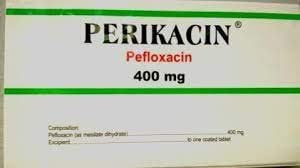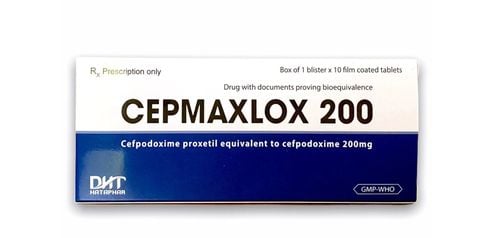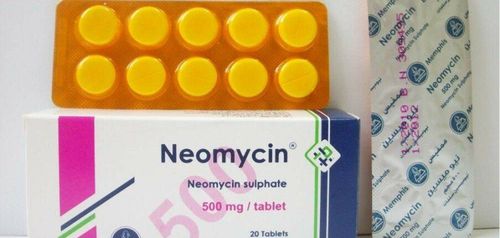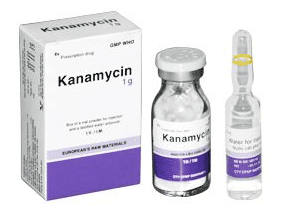This is an automatically translated article.
Ceftanir medicine has the main active ingredient Cefdinir with a content of 300mg and other excipients in a sufficient amount. This is a 3rd generation cephalosporin antibiotic with bactericidal effect by inhibiting bacterial cell wall synthesis. The drug is used to treat mild to moderate infections caused by susceptible bacteria.
1. What is Ceftanir?
What is Ceftanir? Ceftanir medicine has the main active ingredient Cefdinir with a content of 300mg and other excipients in a sufficient amount. This is a 3rd generation Cephalosporin antibiotic, which has a bactericidal effect by inhibiting bacterial cell wall synthesis. The drug is used to treat mild to moderate infections caused by susceptible bacteria.
Ceftanir is in the form of hard capsules. Packing is a box of 1 blister and each blister contains 4 pills or a box of 2 blisters and each blister contains 4 pills.
1.1. Pharmacodynamics of active ingredient Cefdinir Active ingredient Cefdinir is an antibiotic belonging to the 3rd generation cephalosporin group, which has a bactericidal effect by inhibiting bacterial cell wall synthesis. In vitro trials and clinical studies have shown that Cefdinir has a broad spectrum of activity against many Gram-negative bacteria such as Haemophilus influenza, Haemophilus parainfluenzae, Moraxella catarrhalis (including beta-lactamase-producing strains) and Gram-negative bacteria. such as Staphylococcus aureus (including beta-lactamase-producing strains), Streptococcus pneumoniae (penicillin-sensitive strains), Streptococcus pyogenes. In addition, according to the invitro results, Cefdinir is effective against some other Gram-negative bacteria such as Escherichia coli, Citrobacter diversus, Klebsiella pneumoniae, Proteus mirabili and Gram-positive like Staphylococcus epidermidis (methicillin-sensitive strain). , Streptococci group Viridans, Streptococcus agalactiae. Cefdinir is not affected by some beta-lactamase enzymes, especially effective against Gram-positive bacteria such as Staphylococcus sp., Streptococcus sp., resistant to other oral cephalosporin antibiotics from before. Methicillin-resistant strains of Enterococci (Enterococcus faecalis), Pseudomonas, Enterobacter and Staphylococci are resistant to both cefdinir. The mechanism of action of Cefdinir against bacteria is either a decrease in the affinity of Cefdinir for the target protein or a decrease in the permeability of the bacterial cell membrane to the drug. Cefdinir is highly stable to hydrolysis of Beta-lactamases encoded by genes located on plasmids and chromosomes. Cefdinir is stable to some beta-lactamase enzymes, but not all, so the mechanism of resistance to Cefdinir also includes lysis by some beta-lactamases. 1.2. Pharmacokinetics of the active substance Cefdinir Distribution: Following oral administration of Cefdinir, peak plasma concentrations are reached 2 to 4 hours. Absolute bioavailability is estimated at about 25% when administered as an oral suspension. Drug substance Cefdinir is distributed into middle ear fluid, tonsils, sinus tissue, bronchi, lung mucosa, ... at different concentrations in plasma. Metabolism: Cefdinir is not significantly metabolized. Elimination: The drug is eliminated mainly by the kidneys. In adults with normal renal function, the mean plasma half-life of cefdinir is 1.7 to 1.8 hours. 1.3. The effect of the active ingredient Cefdinir Active ingredient Cefdinir is a bactericidal drug, with balanced bactericidal activity, against gram-negative and gram-positive bacteria. The mechanism of action of Cefdinir is to inhibit cell wall synthesis.
2. What are the effects of Ceftanir?
What does Ceftanir do? Ceftanir is used in the treatment of mild to moderate infections caused by susceptible bacteria in the following cases:Community-acquired pneumonia caused by the agent Moraxella catarrhalis (including strains) beta-Lactamase), Haemophilus influenzae, Streptococcus pneumoniae (penicillin sensitive strains). Acute exacerbations of chronic bronchitis are also caused by the agents Moraxella catarrhalis (including beta-lactamase producing strains), Haemophilus influenzae, Streptococcus pneumoniae (penicillin-susceptible strains). Acute sinusitis caused by Haemophilus influenzae, Moraxella catarrhalis (including beta-Lactamase producing strains) and Streptococcus pneumoniae (penicillin sensitive strains). Pharyngitis/tonsillitis caused by Streptococcus pyogenes bacteria. Skin and skin structure infections caused by Staphylococcus aureus (including beta-Lactamase producing strains) and Streptococcus pyogenes. Acute otitis media caused by Moraxella catarrhalis (including beta-lactamase producing strains), Haemophilus influenzae or Streptococcus pneumoniae.
3. How to use and dose of Ceftanir
3.1. How to use Ceftanir Drug Ceftanir is prepared in the form of hard capsules, suitable for direct oral use.
3.2. Dosage of the drug Ceftanir Dosage for adults and children over 12 years old: 1 tablet each time, 2 times a day, 12 hours apart, the average duration of treatment lasts from 5 to 10 days or As directed by the physician. Dosage for children from 6 months to 12 years old: usually 14mg/kg/day (maximum 600mg/day). Dosage for patients with renal failure with clearance < 30ml/min, dose 300mg/time/day.
4. Undesirable effects of the drug Ceftanir
In the process of using Ceftanir, you may experience some unwanted effects, specifically as follows:
Hypersensitivity reactions: allergic reactions in the form of hives, itching urticaria. Rarely: nausea, vomiting, abdominal pain, gastrointestinal disturbances, anorexia, constipation; headache, dizziness, feeling of heaviness in the chest; canker sores, fungal infections; vitamin K deficiency, vitamin B group; decreased white blood cell count, increased liver enzymes, increased BUN. Very rarely, hypersensitivity reactions, enteritis, interstitial pneumonia have occurred. These adverse reactions usually subside upon discontinuation of the drug. You need to proactively inform your doctor about any unwanted effects encountered when using Ceftanir.
5. Interactions of Ceftanir
Interactions of Ceftanir drugs that may occur during use are as follows:
Ceftanir drugs can cause interactions with iron supplements and iron-containing foods, Antacid (containing aluminum or magnesium) reduces drug absorption. Patients should take the drug containing the active ingredient Cefdinir 2 hours before or after. Using Ceftanir with Probenecid: Like other beta-lactamase antibiotics, it inhibits renal excretion leading to increased drug absorption and prolonged half-life. Ceftanir drug interactions may alter its ability to work or increase the effect of unwanted effects. You need to proactively list to your doctor or pharmacist all the prescription and nonprescription drugs, vitamins and minerals, herbal products and wellness foods you are taking to minimize possible drug interactions.
6. Some notes when using Ceftanir
During the use of Ceftanir, patients need to pay attention to some of the following:
6.1. Contraindications of the drug Ceftanir Contraindications of the drug Ceftanir for people with sensitive or hypersensitivity to Cephalosporin antibiotics.
6.2. Notes and precautions of the drug Ceftanir People with a history of hypersensitivity to penicillin group antibiotics, people with kidney disease, people with a history of colitis. Women who are pregnant and breastfeeding. 6.3. How to store the medicine Store the medicine at a temperature below 25°C, avoiding direct sunlight. Keep medication out of reach of children to prevent accidental ingestion. Above is all information about Ceftanir drug, patients need to carefully read the instructions for use, consult a doctor / pharmacist before using. Absolutely do not arbitrarily buy Ceftanir to treat diseases at home, because there may be unwanted side effects to health.
Follow Vinmec International General Hospital website to get more health, nutrition and beauty information to protect the health of yourself and your loved ones in your family.













